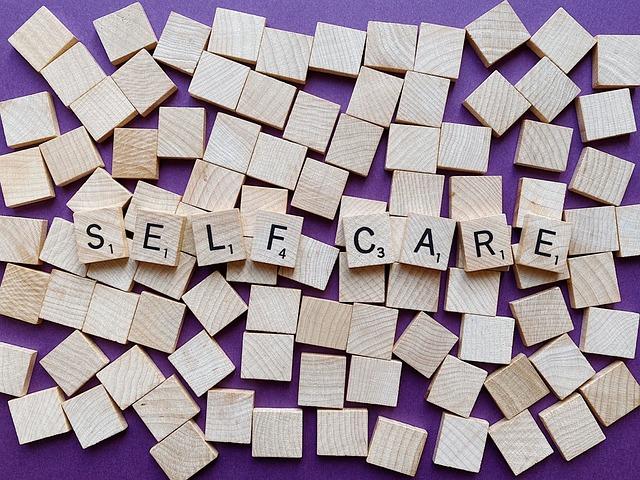In the hustle and bustle of modern life, we often find ourselves focusing on physical health, ensuring we eat right and exercise regularly. However, there’s another crucial aspect of well-being that often goes overlooked: mental stimulation. Just as our bodies require movement and nourishment, our minds thrive on engagement and challenge. This is especially true when it comes to fostering good behavior, whether in children, adults, or even our furry companions. In this article, we’ll explore why mental stimulation is not just a beneficial addition to our daily routines, but a vital component for promoting positive behavior and overall happiness. By understanding the profound impact of keeping our minds active, we can unlock the potential for growth, creativity, and harmony in our lives and the lives of those around us. So, let’s dive into the world of mental enrichment and discover how it can be the key to unlocking better behavior and a more fulfilling life.
Understanding the Connection Between Mental Engagement and Behavior
Engaging the mind is not just an exercise for the brain but a vital component in nurturing positive behavior. When individuals are mentally stimulated, they are more likely to exhibit behaviors that are constructive and beneficial. This is because mental engagement encourages the development of critical thinking skills, enhances emotional regulation, and fosters a sense of purpose. Without mental stimulation, the mind can become idle, leading to feelings of boredom or restlessness, which can sometimes manifest as negative behavior.
- Critical Thinking: Engaging in activities that challenge the mind promotes better decision-making and problem-solving skills.
- Emotional Regulation: Stimulated minds are better equipped to manage emotions and stress, reducing impulsive reactions.
- Sense of Purpose: Meaningful mental activities provide a sense of accomplishment and direction, which can improve overall behavior.
Integrating mental stimulation into daily routines doesn’t have to be complex. Simple practices like reading, puzzles, or engaging conversations can make a significant difference. By prioritizing mental engagement, we pave the way for a healthier, more balanced approach to behavior management.

Creative Ways to Incorporate Mental Challenges into Daily Routines
Engaging your mind daily doesn’t have to feel like a chore. Infusing mental challenges into your routine can be both rewarding and fun. Here are some innovative ideas to seamlessly blend brain exercises into everyday activities:
- Puzzle Mornings: Start your day with a jigsaw or crossword puzzle. Not only do they sharpen your mind, but they also provide a sense of accomplishment that can set a positive tone for the day.
- Mindful Walks: Transform your regular strolls into a mindful exercise by observing your surroundings in detail. Try identifying different types of trees or birds, or count the number of steps between two points.
- Cooking with a Twist: Challenge yourself by cooking without a recipe. Use whatever ingredients you have on hand to create a new dish. This not only boosts creativity but also sharpens problem-solving skills.
- Reading Roulette: Pick a random book from your shelf and read a chapter. It’s a delightful way to explore different genres and styles, keeping your mind engaged and curious.
- Language Minutes: Dedicate a few minutes each day to learning a new word in a different language. This not only enhances vocabulary but also expands cultural understanding.
Incorporating these mental exercises into your routine can lead to improved focus, better problem-solving skills, and a more fulfilling daily life.
Recognizing Signs of Mental Understimulation and Addressing Them
When individuals, whether they are children, adults, or even pets, lack adequate mental engagement, it often manifests in various behavioral signs. Recognizing these signals is the first step in addressing the issue. Restlessness and irritability are common indicators; these can be seen when someone finds it hard to concentrate or becomes easily bored. Frequent distractions, such as daydreaming or doodling, might also point to a need for more challenging activities. Additionally, a noticeable drop in motivation or enthusiasm for tasks they once enjoyed can be a telltale sign.
- Engage in Puzzles and Games: Introduce activities that require problem-solving and strategic thinking. This could be in the form of crosswords, Sudoku, or interactive online games.
- Encourage Creative Expression: Activities like drawing, writing, or playing a musical instrument can provide an outlet for creativity and mental engagement.
- Promote Learning New Skills: Whether it’s picking up a new language or learning to cook a new dish, the process of acquiring new knowledge keeps the mind active.
By understanding and addressing these signs, we can create environments that foster positive behavior and a sense of fulfillment. Tailoring activities to suit individual interests not only alleviates understimulation but also promotes a healthier, happier mindset.
Practical Tips for Balancing Physical and Mental Activities
Integrating both physical and mental exercises into your daily routine can significantly enhance overall well-being and behavior. While physical activities are often emphasized, mental stimulation is equally crucial. Here are some practical tips to help you find that balance:
- Schedule Time for Both: Allocate specific times in your day for physical workouts and mental challenges. This could be a morning jog followed by a puzzle-solving session.
- Combine Activities: Try activities that engage both body and mind, such as yoga with mindful breathing or dance classes that require learning new steps.
- Mindful Breaks: During physical exercise, incorporate short mindful breaks. Focus on your breathing or practice gratitude to stimulate your mind while your body rests.
- Explore New Hobbies: Engage in hobbies that require mental focus and physical movement, like gardening or playing a musical instrument.
By consciously incorporating these strategies, you can ensure a balanced approach that nurtures both your physical health and mental acuity, leading to improved behavior and a more fulfilling lifestyle.

